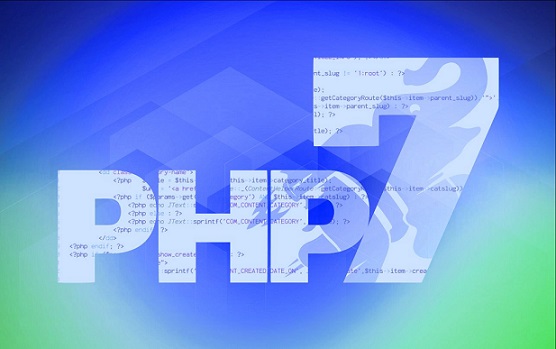The world of web development has been on an evolutionary spree, and PHP has been riding shotgun throughout this journey. With every new PHP version, developers gain access to a plethora of features and optimizations that streamline the coding experience. Whether you’re intrigued by the current PHP version or looking to delve into the past iterations, this comprehensive guide will quench your thirst for knowledge. So, buckle up as we journey through the annals of PHP’s vivid history and its multitude of php releases.
The Humble Beginnings
In the earliest days, PHP was more of an improvisational act than a finely-tuned language. Created by Rasmus Lerdorf in 1994 as a set of Perl scripts, PHP stood for “Personal Home Page” tools. This era was far removed from the most recent PHP version we know today, but the seeds for greatness were already sown. Initially, it was used to manage Rasmus’ personal website, giving little indication of the juggernaut it would become.
PHP’s initial release was nothing more than a rudimentary tool with basic CGI (Common Gateway Interface) capabilities. PHP version 1.0, officially released in 1995, brought along fundamental programming constructs like loops and conditionals. It was a move that grabbed the attention of budding developers who started to see the potential in using PHP for web development.
By 1997, two Israeli developers, Zeev Suraski and Andi Gutmans, found themselves frustrated by the limitations of PHP 2. They decided to rewrite PHP’s core, resulting in PHP 3. This was a pivotal moment that defined PHP’s future, leading to functionalities that we now consider standard. Among these were a more consistent language syntax and support for a wide range of databases.
The PHP version list starts getting interesting around PHP 4, which was released in May 2000. PHP 4 was powered by the Zend Engine 1.0, a highly optimized execution engine that gave a considerable speed boost to PHP applications. It marked the language’s first steps into maturity, drawing a line between the makeshift solutions of the past and the robust capabilities of the present and future.
Crossing Milestones: PHP 5
With every passing year, the clamor for advanced features and functionalities grew louder. In 2004, the new PHP version, PHP 5, was rolled out, setting a new precedent. This version was powered by the Zend Engine II and brought about several improvements that would prove to be game-changing for developers. Among the most celebrated features were enhanced support for object-oriented programming, MySQLi extensions, and SimpleXML.
Another crucial aspect of PHP 5 was its focus on php updates, specifically around security. Features like the filter extension aimed at sanitizing user input and preventing XSS attacks, highlighting the language’s growing focus on creating secure web applications. This emphasis on security has remained a cornerstone in every php latest version since then.
Perhaps what set PHP 5 apart from its predecessors the most was its extensive Standard PHP Library (SPL). With functionalities ranging from data structure manipulation to standard algorithms, SPL empowered developers to accomplish tasks more efficiently and effectively. This powerful arsenal of tools made PHP 5 popular for several years, even resisting the advancements in subsequent versions.
For many, PHP 5 was more than just a current PHP version at its time; it was a revolution. Many developers fondly remember the 5.x series as the golden age of PHP, thanks in part to its long php end of life span. Official support lasted until January 2019, with the final version, PHP 5.6, receiving security updates until then.

The Modernization Era: PHP 7
The jump from PHP 5 to PHP 7 was nothing short of groundbreaking. Opting to skip the number 6 due to a previously failed Unicode project, PHP 7 ushered in an era of unprecedented performance improvements and modern syntax. Features like Scalar Type declarations, Return Type Declarations, and the Spaceship Operator changed the way developers interacted with PHP.
One of the standout features was Just-In-Time (JIT) Compilation, elevating PHP’s performance to rival that of compiled languages. The new PHP version made a strong statement about PHP’s capabilities as a high-performance language, suitable for enterprise applications.
The introduction of Error Handling was a significant move towards robustness. Fatal errors that would stop a script in its tracks in earlier versions were now converted to exceptions. It allowed developers to manage errors gracefully, paving the way for more resilient applications.
While PHP 5 had a focus on php updates for security, PHP 7 took a broader approach, emphasizing performance optimization alongside robustness. Its internal changes also resulted in decreased memory usage, a pivotal factor in the decision-making of developers looking for scalable solutions.

PHP 8: The Current Revolution
Fast forward to today, and the most recent PHP version, PHP 8, is the latest prodigy to walk the PHP ramp. This version has introduced a range of fascinating features such as Union Types, Named Arguments, and the NullSafe Operator, further modernizing PHP’s syntax and capabilities.
To the joy of many, PHP 8 has also embraced the Just-In-Time (JIT) Compiler, a feature that exponentially improves the language’s performance. Although PHP 7 was no slouch, the JIT Compiler has made PHP 8 faster than any current PHP version in existence.
What is the latest PHP version you ask? Well, as of my last update in January 2022, PHP 8.1 is the freshest release, bringing Enums and Read-Only Properties to the table. These improvements make the language not just efficient, but also incredibly expressive, allowing for more readable and maintainable code.
The version also introduces a new FFI (Foreign Function Interface), enabling the execution of C functions in a PHP script. This is a leap towards seamless interoperability between PHP and native libraries, a much-requested feature by the developer community.

PHP’s End of Life and its Implications
Understanding a version’s php end of life is crucial for developers who have to maintain legacy projects. Once a version reaches its end of life, it no longer receives official security updates, making it susceptible to vulnerabilities. For instance, the end of life for PHP 4 in 2008 and PHP 5 in 2019 led to urgent calls for updating to a more recent version.
The php version list is quite extensive, and knowing when to migrate can save both time and resources. Skipping an update might seem inconsequential in the short term, but can lead to significant issues down the line. For example, many developers found themselves in a bind when PHP 5 reached its end of life, with no easy path to PHP 7 due to deprecated functions and substantial changes in the language.
It’s also important to note that the end-of-life cycle is generally well-documented for each php version, giving developers ample time to plan their transition. Hence, it’s advisable to keep an eye on the official PHP website for announcements about upcoming versions and respective end-of-life dates.
PHP Versions: What Lies Ahead?
New PHP version releases are always around the corner, and the development team behind PHP shows no signs of slowing down. They continue to work tirelessly, with discussions about PHP 8.2 and even PHP 9 already making the rounds in the community. These prospective versions are likely to focus on performance enhancements, security improvements, and modern language features that streamline code writing and execution. But what can developers really expect?
The RFC (Request For Comments) process, a staple in PHP’s development, allows anyone from the community to propose new features and improvements. This has been the driving force behind the innovation in each new PHP version, and it’s anticipated to usher in further advancements. For example, there is talk about introducing more robust asynchronous programming features, a step that could revolutionize PHP’s utility in real-time applications.
Another buzzword is “immutability,” a concept widely adopted in functional programming languages. Immutability, if introduced in a future PHP version, could make PHP applications more predictable and easier to maintain. This would not only affect PHP’s core, but would likely prompt a new wave of libraries and frameworks that take advantage of this feature.
It’s also likely that future PHP versions will continue to learn from other popular programming languages, adapting features that have proven effective and beneficial elsewhere. As web development becomes more intricate, the need for a language that can easily integrate with various technologies will become increasingly vital. Therefore, we can expect further improvements in PHP’s APIs and perhaps more native support for other programming paradigms.
Conclusion
From its humble beginnings to the technological marvel that is the current PHP version, PHP’s journey has been an exhilarating rollercoaster of innovation and growth. Each version has not only built upon its predecessor, but has also often redefined what the language can achieve, shaping the very landscape of web development.
As we move forward, there’s no telling where the next php updates will take us. What we do know is that the language’s flexibility and community-driven nature will continue to make it a linchpin in the world of web development. So, whether you’re still clinging to an old PHP version list or eagerly awaiting the next big release, PHP offers a world of possibilities that is continually expanding. And for those wondering what is the latest PHP version, always remember that in the world of PHP, the latest version is merely a precursor to the next great innovation.


